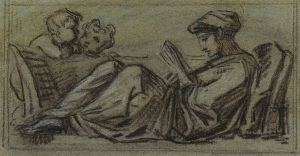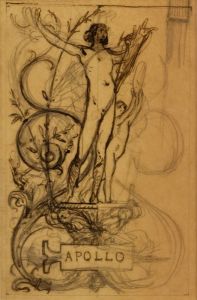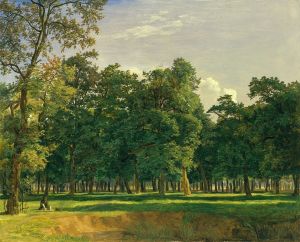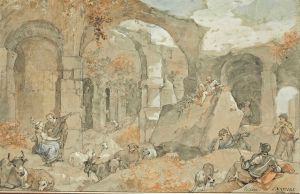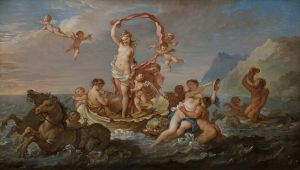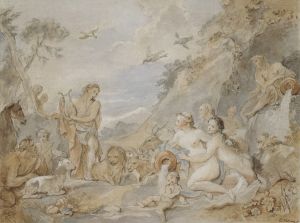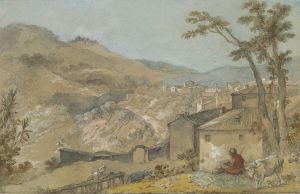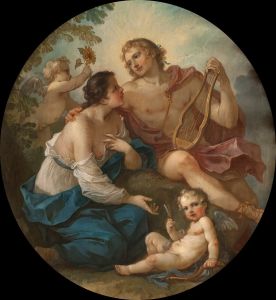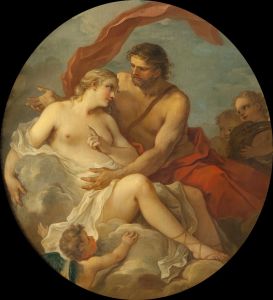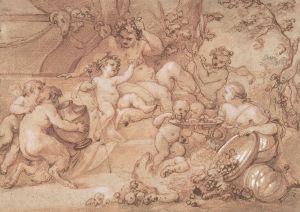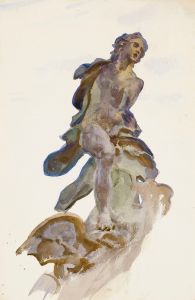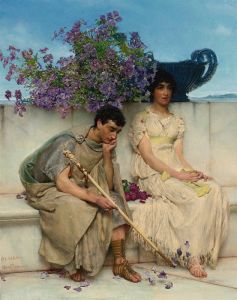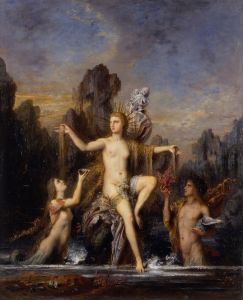
La Source
A hand-painted replica of Charles-Joseph Natoire’s masterpiece La Source, meticulously crafted by professional artists to capture the true essence of the original. Each piece is created with museum-quality canvas and rare mineral pigments, carefully painted by experienced artists with delicate brushstrokes and rich, layered colors to perfectly recreate the texture of the original artwork. Unlike machine-printed reproductions, this hand-painted version brings the painting to life, infused with the artist’s emotions and skill in every stroke. Whether for personal collection or home decoration, it instantly elevates the artistic atmosphere of any space.
Charles-Joseph Natoire was a prominent French painter of the 18th century, known for his contributions to the Rococo movement. One of his notable works is "La Source," which translates to "The Spring" in English. This painting exemplifies the Rococo style, characterized by its lightness, elegance, and use of curving, natural forms.
"La Source" was created around 1742, during a period when Natoire was at the height of his artistic career. He was a student of the French Academy in Rome, where he absorbed the influences of classical antiquity and the Italian masters. This background is evident in "La Source," which combines classical themes with the playful and decorative elements typical of Rococo art.
The painting depicts a young woman, often interpreted as a nymph, seated by a spring. She is partially nude, with a delicate drapery that enhances rather than conceals her form. The setting is a lush, idyllic landscape, filled with greenery and flowers, which adds to the sense of tranquility and natural beauty. The figure's pose is graceful and relaxed, embodying the Rococo ideals of beauty and sensuality.
Natoire's use of color in "La Source" is particularly noteworthy. He employs a soft, pastel palette that enhances the gentle, dreamlike quality of the scene. The light and shadow are handled with great skill, creating a sense of depth and volume in the figure and the surrounding landscape. This attention to detail and mastery of technique are hallmarks of Natoire's work and contribute to the painting's overall effect.
"La Source" reflects the influence of both classical art and the contemporary tastes of Natoire's time. The subject of a nymph by a spring is a common motif in classical mythology, symbolizing purity, beauty, and the life-giving properties of water. However, Natoire's interpretation is distinctly Rococo, with its emphasis on elegance, charm, and a certain lightheartedness.
Charles-Joseph Natoire was a significant figure in the French art world of the 18th century. He was appointed director of the French Academy in Rome in 1751, a position he held until 1775. His work, including "La Source," was highly regarded by his contemporaries and continues to be appreciated for its technical skill and aesthetic appeal.
Today, "La Source" is housed in the Musée des Beaux-Arts in Nîmes, France. The museum's collection includes a range of works from different periods, but Natoire's painting stands out as a fine example of Rococo art. It offers viewers a glimpse into the artistic trends of the 18th century and the enduring appeal of classical themes interpreted through the lens of Rococo elegance.
In summary, "La Source" by Charles-Joseph Natoire is a masterful representation of Rococo art, blending classical influences with the stylistic characteristics of the 18th century. Its depiction of a serene, beautiful nymph in a natural setting captures the essence of the period's artistic ideals and showcases Natoire's skill as a painter.





